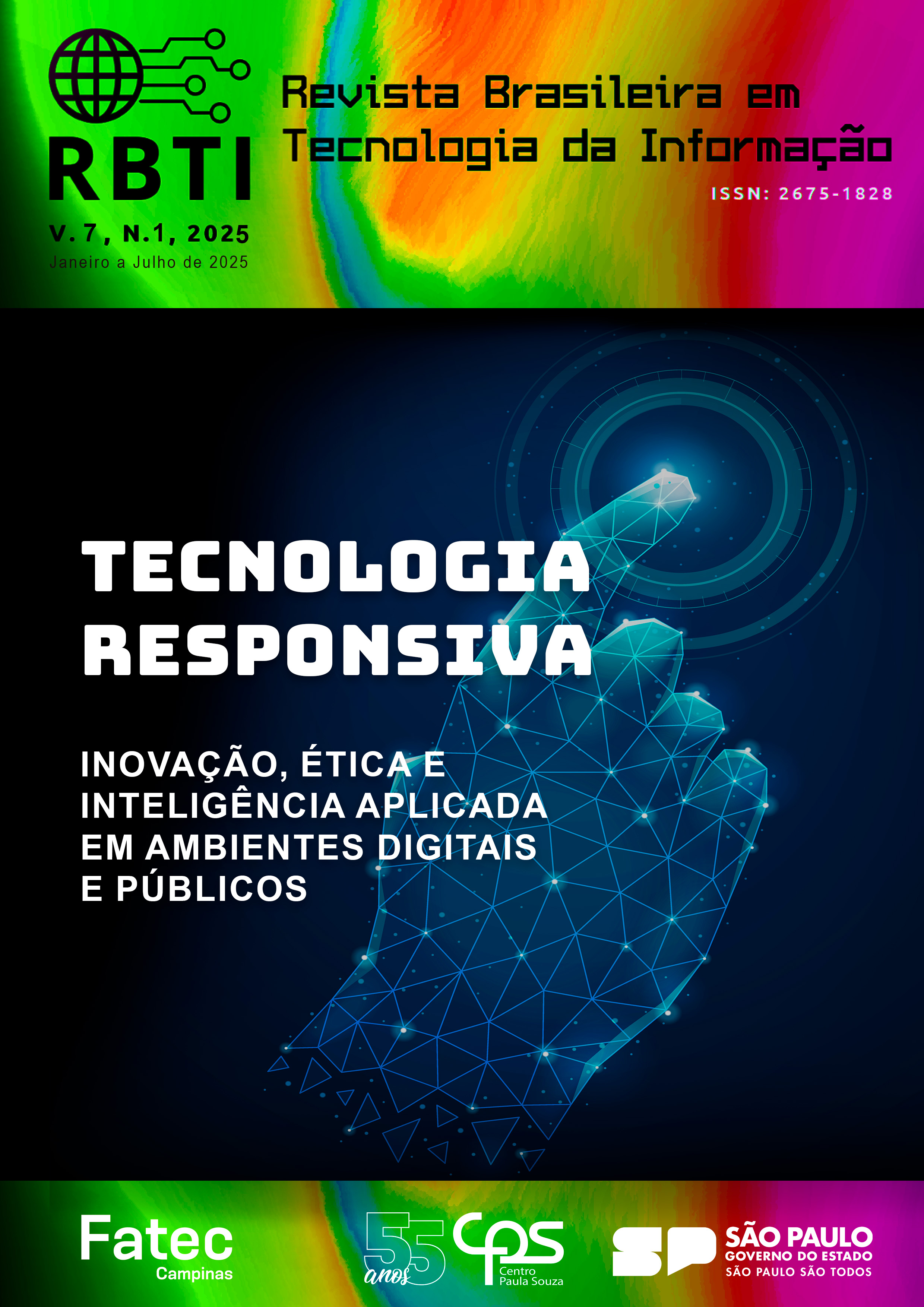Adaptive traffic light control system with real-time data collection of urban traffic
Keywords:
Smart Traffic Light, Urban mobility, Data collect, Real-time data scienceAbstract
This paper presents an approach for collecting and processing real-time urban traffic data, with the aim of dynamically adjusting traffic light timings based on current traffic conditions. The proposed methodology uses the OpenCV library in a Python environment to capture traffic images, which are processed by a YOLO (You Only Look Once) neural network to extract information, such as the types and number of vehicles passing on the roads. Next, an algorithm was developed to dynamically adjust traffic light times according to real-time traffic conditions. The effectiveness of the system was evaluated through a simulator containing a four-way intersection and through simulations that compared a dynamic traffic light system with a static system. Simulation results demonstrated that the dynamic system reduced the average vehicle waiting time at intersections and increased the number of vehicles crossing the intersection per unit time, highlighting the importance of real-time data science in creating control systems intelligent traffic systems, capable of meeting the demands of a modern and efficient urban infrastructure.
References
AROCHO, Rafael. Os desafios da análise de dados em tempo real. Estatmg, 2023. Disponível em: https://estatmg.com.br/2023/03/04/os-desafios-da-analise-de-dados-em-tempo-real/. Acesso em: 21 fev. 2024.
AWARI. A importância da ciência de dados em tempo real. Awari, 2023. Disponível em: https://awari.com.br/a-importancia-da-ciencia-de-dados-em-tempo-real/?utm_source=blog&utm_campaign=projeto+blog&utm_medium=A%20i
Sistema de controle adaptativo de semáforos com coleta de dados em tempo real do tráfego nas vias urbanas mport%C3%A2ncia%20da%20ci%C3%AAncia%20de%20dados%20em%20tempo%20real. Acesso em: 17 fev. 2024.
BERTINI, R. L. You are the traffic jam: an examination of congestion measures. In: ANNUAL MEETING OF THE TRANSPORTATION RESEARCH BOARD, 85., 2005, Washington, DC. Proceedings [...]. Washington, DC, 2005.
CNM. Confederação Nacional de Municípios. Análise do impacto da frota de veículos nos Municípios brasileiros. [2023?]. Disponível em: https://cnm.org.br/storage/biblioteca/2023/Estudos_tecnicos/202309_ET_MOB_Impacto_frota_veiculos.pdf. Acesso em: 18 maio 2024.
DENATRAN. Departamento Nacional de Trânsito. [2024?]. Disponível em: [Inserir URL do DENATRAN, se houver]. Acesso em: 1 maio 2024.
GANDHI, M. M., et al. Smart control of traffic light using artificial intelligence. In: IEEE INTERNATIONAL CONFERENCE ON RECENT ADVANCES AND INNOVATIONS IN ENGINEERING (ICRAIE), 5., 2020. Proceedings [...]. [S. l.]: IEEE, 2020.
JUNGA, Abel Mateus. Aplicação da inteligência artificial no desenvolvimento de um semáforo inteligente para os cruzamentos da cidade de Maputo. 2022. [S. l.]: [s.n.], 2022.
PLOEG, F. V. D.; POELHEKKE, S. Globalization and the rise of mega-cities in the developing world. Cesifo Working Paper, n. 2208, fev. 2008. (Category Trade Policy).
PRATA, D. F. R. F. et al. Os impactos causados congestionamento e crescimento da frota de veículos na cidade de Itaperuna/RJ. Revista Multidisciplinar da UNIPAC, v. 1, n. 1, 2020.
QUEIROZ, Adriele. Análise de dados em tempo real. Dio, 2023. Disponível em: https://www.dio.me/articles/analise-de-dados-em-tempo-real. Acesso em: 18 fev. 2024.
ROCHA, Anderson Felipe de Melo. Implantação de semáforo inteligente como solução na mobilidade urbana. 2021. [S. l.]: [s.n.], 2021.
RUFOLO, A. M.; BIANCO, M. J. The impact of congestion pricing and parking taxes on spatial competion. School of Urban Studies and Planning Portland State University, 1998.
SCARINGELLA, R. S. A crise da mobilidade urbana em São Paulo. São Paulo em Perspectiva, v. 15, n. 1, jan./mar. 2001.
Downloads
Published
How to Cite
Issue
Section
License
Copyright (c) 2025 Portugues

This work is licensed under a Creative Commons Attribution-NonCommercial 4.0 International License.
A Revista Brasileira em Tecnologia da Informação utiliza a licença do Creative Commons (CC), preservando assim, a integridade dos artigos em ambiente de acesso aberto.



